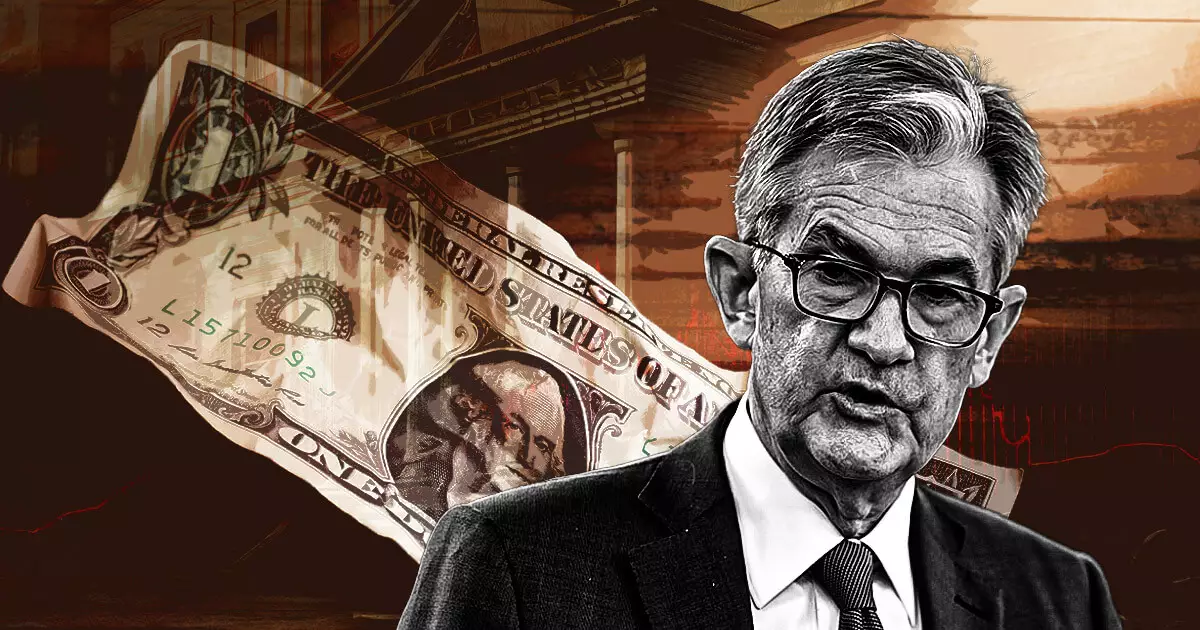In a revealing speech at The Economic Club of Chicago, Federal Reserve Chair Jerome Powell outlined an intricate vision that combines cautious optimism with a clear recognition of regulatory necessity surrounding stablecoins. This duality in his approach reflects a complex reality: while the Fed acknowledges the transformative potential of these digital assets, it also understands the regulatory minefield they inherently represent. With both chambers of Congress seemingly revitalized in their quest to create a comprehensive stablecoin framework, Powell’s discourse becomes a central pillar for understanding a burgeoning market that some financial experts believe could reshape not just payment systems, but the essence of money itself.
Powell’s acknowledgement that earlier collaborative attempts with Congress were largely unproductive speaks volumes about the challenges inherent in aligning innovation with regulation. Yet, the palpable shift in legislative interest indicates a newfound urgency to tackle these issues. By describing stablecoins as a “digital product” with broad appeal, he signals a willingness to embrace the future while simultaneously emphasizing the importance of crafting a safe, sound regulatory environment.
Consumer Protection: The Top Priority
Consumer protection is inherently woven into Powell’s rhetoric. His insistence that any proposed framework should focus on transparency and consumer safeguards reveals a keen understanding of the potential pitfalls of allowing stablecoins to flourish without oversight. In a landscape fraught with scams and instability, it is imperative that laws don’t merely exist but are crafted to empower consumers and foster trust in these digital platforms. The stakes are extraordinarily high: failure to safeguard consumers could lead to widespread public distrust, undermining the very innovations that Powell recognizes as potentially revolutionary.
The financial system’s fragility, exacerbated by the volatility of cryptocurrencies, provides a compelling backdrop for Powell’s caution. In his comments, he acknowledges a shift from a conservative stance towards a more nuanced approach that encourages “responsible innovation.” This balancing act—preserving financial safety while fostering innovation—is a delicate one. If managed correctly, it could lead to a scenario where both traditional banks and cryptocurrency firms can coexist, but the wrong steps taken now could sow the seeds of another financial crisis. The need for a careful but assertive regulatory framework has never been more urgent.
A Liberal Approach to Innovation
From a center-right liberal perspective, Powell’s openness to integrating banking services with the burgeoning crypto sphere must be applauded. By not cutting off access to banking for lawful digital asset firms, Powell promotes a spirit of innovation that is often stifled by overregulation. In an era where digital transformation is not just a buzzword but a foundational shift in how we transact, the Fed’s role as a facilitator rather than an obstacle is essential. This sentiment echoes a broader liberal principle: that free markets flourish when innovators are granted the leeway to experiment, create, and succeed, while still operating under prudent regulation.
The heart of this liberal philosophy is the belief that market-driven solutions often lead to the most effective outcomes, particularly in technology. Powell seems to embody this mindset, advocating for a regulatory environment that enables innovation while demanding accountability. This clever stance suggests that the Federal Reserve may play a pivotal role not just as a regulator but as a partner in propelling financial technology forward.
The Wild West of Stablecoins
As Powell rightly points out, while there is a surge in the use of stablecoins—which reportedly surpassed $14 trillion in transfer volume last year—the governing framework remains shockingly underdeveloped. The absence of a federal regulatory regime pinpointed directly at stablecoins leaves a gaping hole that could be detrimental in the long run. Legislative proposals like the GENIUS Act and the STABLE Act are steps in the right direction, but the urgency of crafting an all-encompassing, cohesive strategy cannot be overstated. With cryptocurrencies increasingly integrating into global financial markets, any delays in establishing clear guidelines could expose consumers and financial institutions to unprecedented risks.
The shared responsibility lies with lawmakers and regulators alike to usher in a regulatory era that reflects the realities of an evolving financial landscape. The potential for stablecoins to redefine payment processing and digital settlement is immense. However, without the necessary legislation to harness that potential responsibly, we could very well witness the unregulated chaos that characterized the early days of the internet.
The evolution of financial product offerings, such as stablecoins, isn’t just an evolution of technology but a revolution in the fundamental mechanics of how we think about money. As we move towards a future where digital assets play a crucial role, the conversations prompted by leaders like Powell are crucial—not just for the current generation but for the financial systems of tomorrow.

